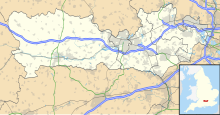Geography
Hog's Hole is one of three nationally important chalk grassland sites that lie within the North Wessex Downs along with Rushmore and Conholt Downs (SSSI) and part of Inkpen and Walbury Hills (SSSI). [3]
Hog's Hole consists of a dry valley, or combe, cut in the Middle and Upper Chalk. The steep east and west-facing valley sides support only thin rendzina soils, an unusual feature being lines of bare chalk and flint scree. The valley opens out in its southern part, the remainder of the site consisting of a moderately steep and undulating south-facing slope and a steep west-facing slope rising to a plateau area. [4]
This page is based on this
Wikipedia article Text is available under the
CC BY-SA 4.0 license; additional terms may apply.
Images, videos and audio are available under their respective licenses.

